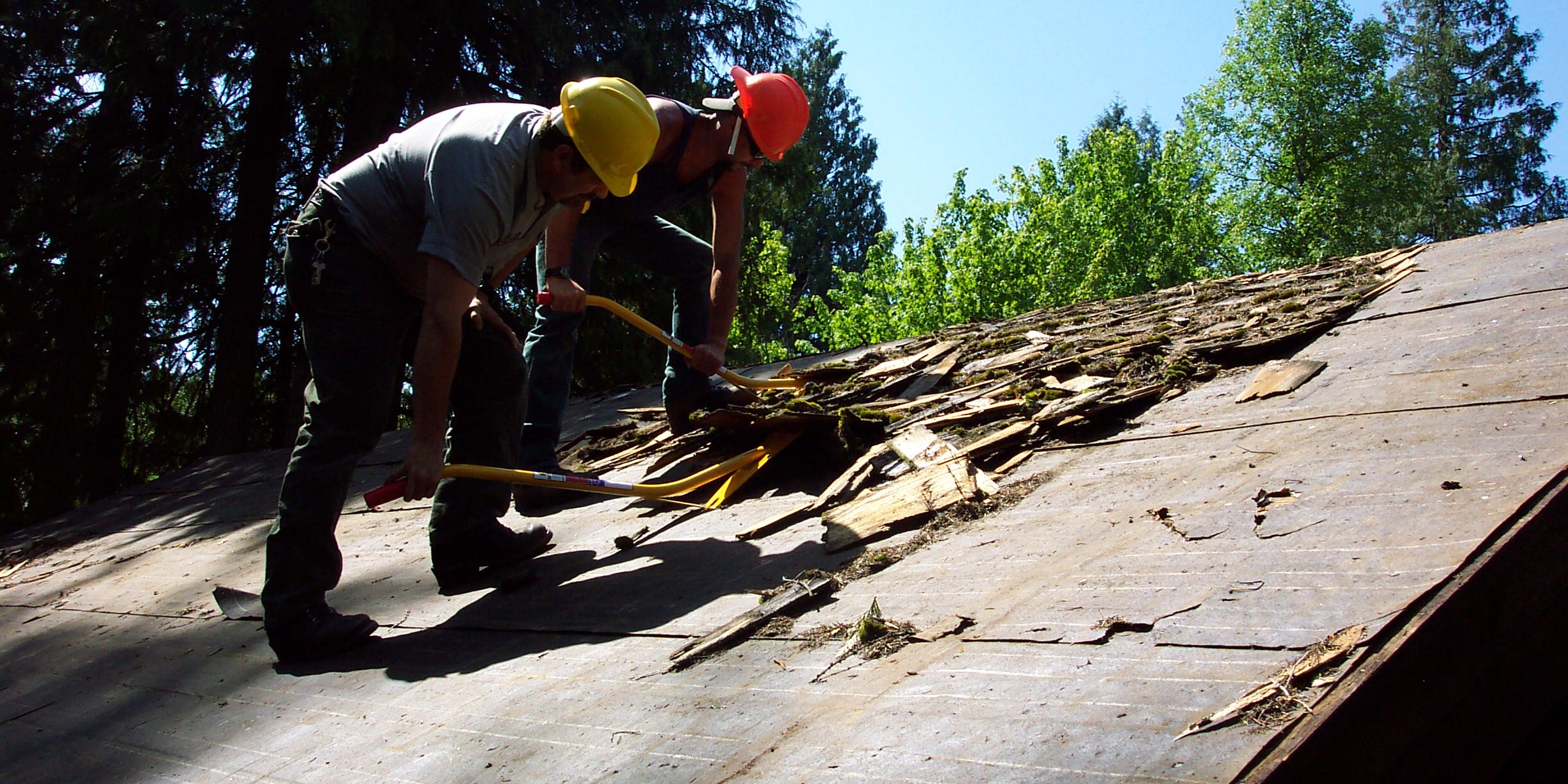Insurance adjusters are critical factors in the process of roof repairs. They examine several factors when assessing a roof, including age and condition. Understanding what they look for can help you get the most out of your insurance claim.

What do Insurance Adjusters Look for On Roofs?
Insurance adjusters typically look for the following things on roofs when assessing potential insurance claims:
- Roof damage: The adjuster will look for any visible signs of damage to the roof, such as missing or broken shingles, dents, cracks, or holes.
- Age and condition of the roof: The adjuster will evaluate the age and condition of the roof to determine whether any damage results from normal wear and tear or a specific event, such as a storm.
- Maintenance and upkeep: The adjuster may ask the homeowner about the roof’s maintenance history, including any repairs or replacements, to determine whether any damage could have been prevented.
- Weather-related damage: The adjuster will look for signs of weather-related damage, such as hail, wind, or water damage from heavy rain or snow.
- Installation quality: The adjuster may inspect the roof’s installation to ensure it was done correctly and meets local building codes.
- Underlying structure: The adjuster may inspect the roofing structure to ensure that it is sound and does not contribute to any damage or problems with the roof.
- Other factors: The adjuster may consider other factors that could affect the roof’s croof’son or damage, such as nearby trees, ventilation, exposure to sunlight, or other environmental factors.
The first thing that adjusters look at is the age of your roof. Generally, roofs last anywhere between 15 to 25 years, depending on the type of material used and how well it has been maintained over its lifetime. Insurance companies will typically only cover damage if your roof is within 10-15 years of its expected lifespan, so if you’ve had a roof for more than 15 years, then chances are you won’t table for any damage.
Adjusters also pay attention to what material was used to construct your roof. Asphalt shingles are the most common material used for residential roofs and come with up to 30-year warranties. Still, other materials such as tile, metal, or wood shake can require more maintenance and have shorter expected lifespans. Knowing the type of material your roof is made from may help you determine whether or not an insurance claim will be approved.
The condition of your roof is another critical factor that adjusters consider when evaluating a potential claim. If there has been deferred maintenance or preexisting damage, the insurance company may not cover those costs as part of their policy agreement. Any signs of wear or tear should be brought to an adjusteradjuster’son so they can consider them before making their final decision about coverage. Additionally, adjusters may inspect for missing or worn shingles, loose seams or flashing, cracks in masonry work, or clogged gutters that could all lead to further damage down the road if left unchecked.
Finally, adjusters consider any additional features on your roof that could increase potential damages, like decks and skylights, which may be exposed during storms or other hazardous weather events, causing further destruction to property below them. In these cases, it is best to speak with your provider in advance so they know what features they should look out for while inspecting the area after an incident occurs to ensure adequate coverage if something happens.
When an insurance adjuster is assessing roof damage, they typically use a combination of visual inspections and measurements to estimate the extent of the damage. Here’s aHere’sple of how an insurance adjuster might evaluate roof damage:
- Visual inspection: The adjuster will visually inspect the roof to look for any visible signs of damage, such as missing or broken shingles, dents, or cracks. They will also look for any signs of water damage, such as stains on the ceiling or walls inside the home.
- Measurements: The adjuster will measure the roof to determine its size and slope. They may use a tape measure or laser device to measure the length and width of the roof and an inclinometer to measure the slope or pitch.
- Damage assessment: Using the visual inspection and measurements, the adjuster will estimate the extent of the roof damage. They may use a tool called a roof diagram to mark the location and extent of the damage.
- Cost estimation: The adjuster will estimate the cost of repairs or replacement based on the extent of the damage. For example, if the adjuster determines that 30% of the shingles on the roof are damaged, they may estimate that the repair cost is $3,000 based on the local cost of labor and materials.
- Coverage determination: Finally, the adjuster will determine whether the damage is covered under the homeownehomeowner’sce policy. If the damage is covered, the adjuster will estimate the cost of repairs or replacement to the homeowner and work with them to coordinate repairs with a contractor.
It’s impIt’snt to note that estimating roof damage can vary depending on the insurance company, the type of damage, and other factors.
By understanding what insurance adjusters look for on roofs when assessing a potential claim, you can better prepare yourself when filing one to get the most out of your policy agreement with them. By knowing what types and conditions of materials are covered under various policies and being aware of additional features that could affect coverage amounts, you can maximize safety and reimbursement following roof storm damage repairs!
